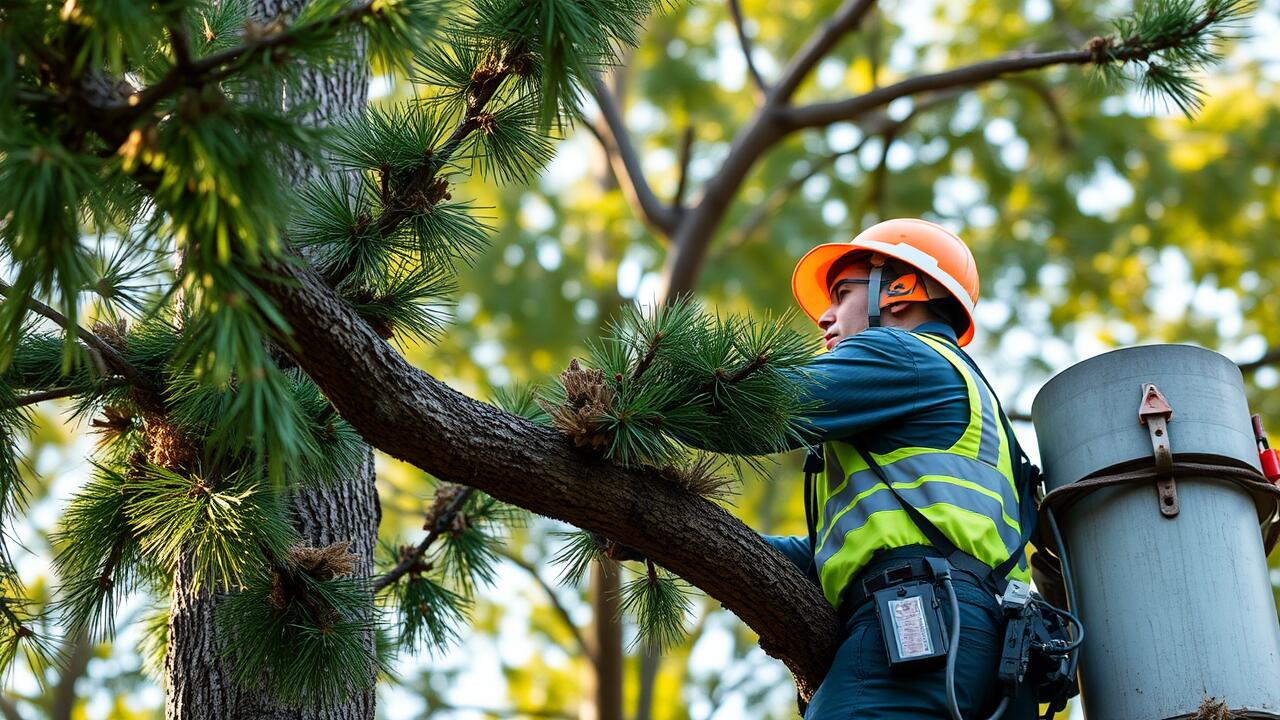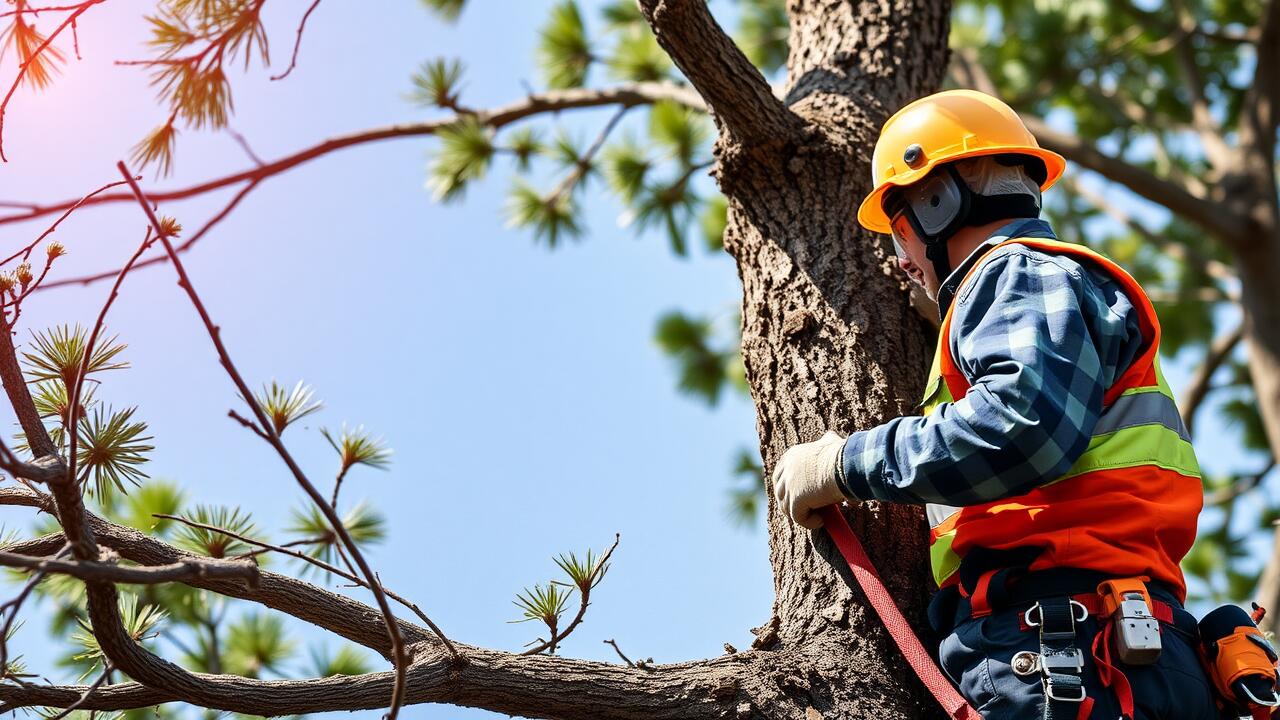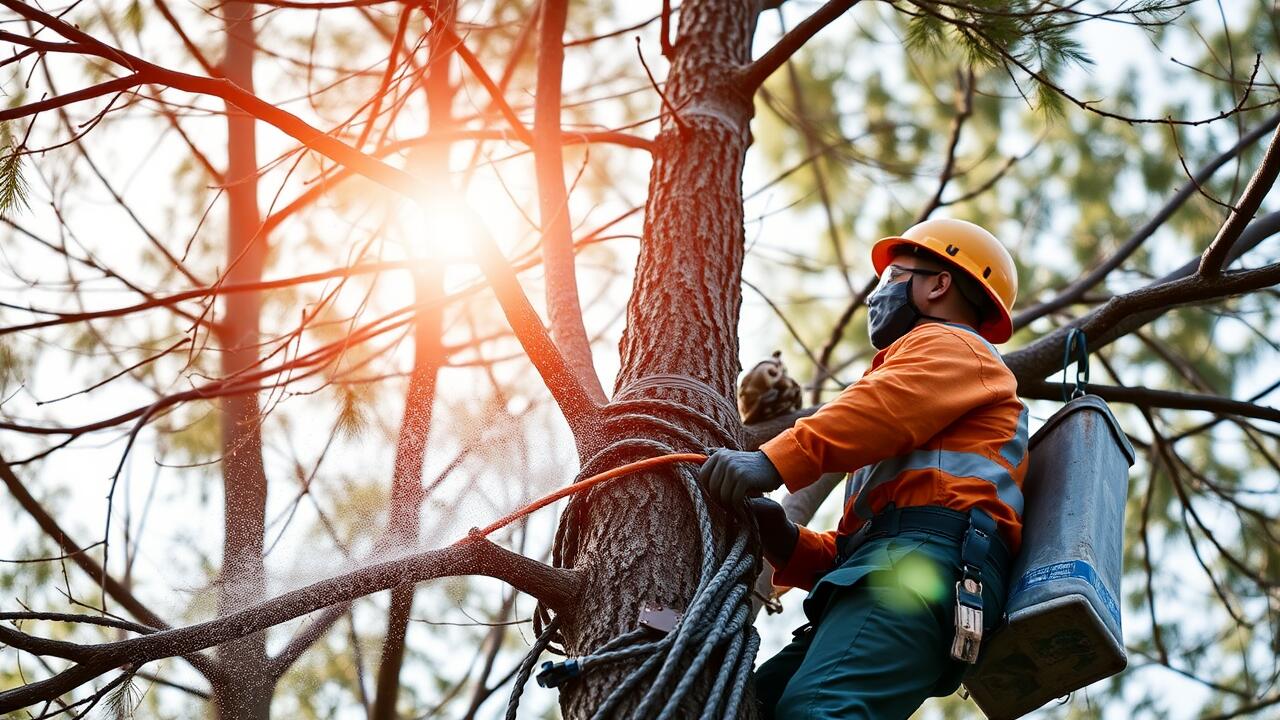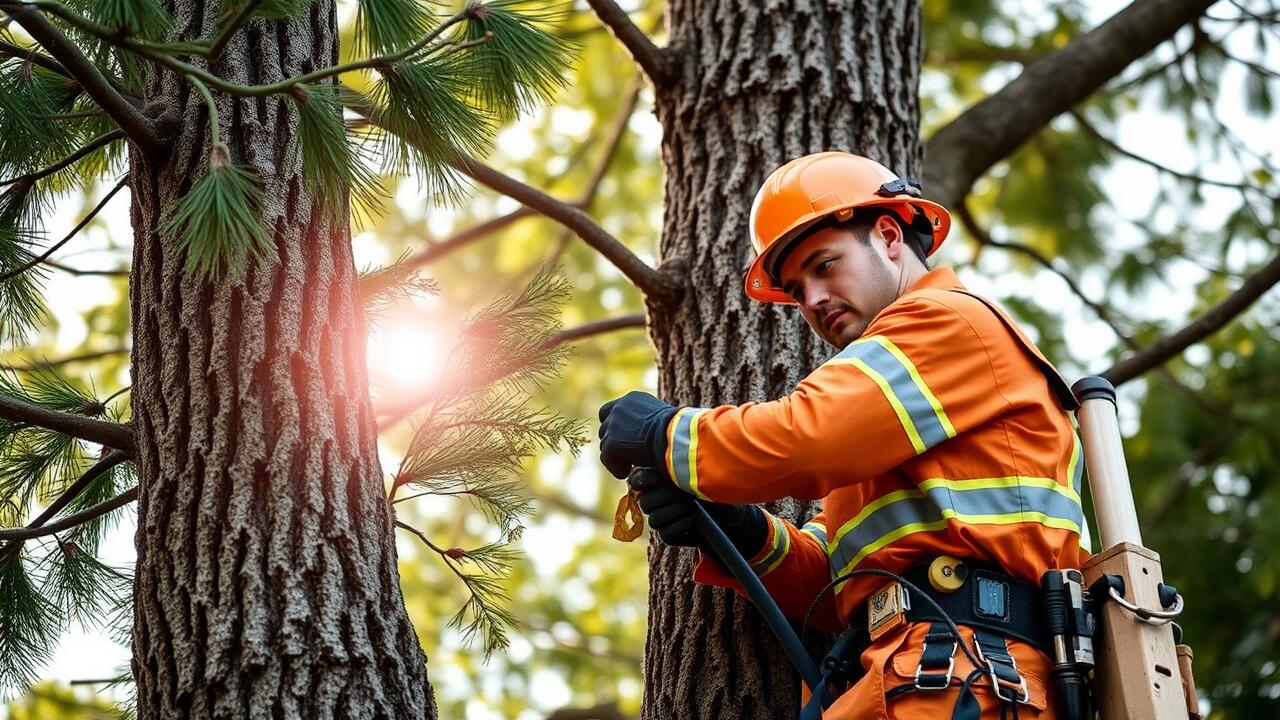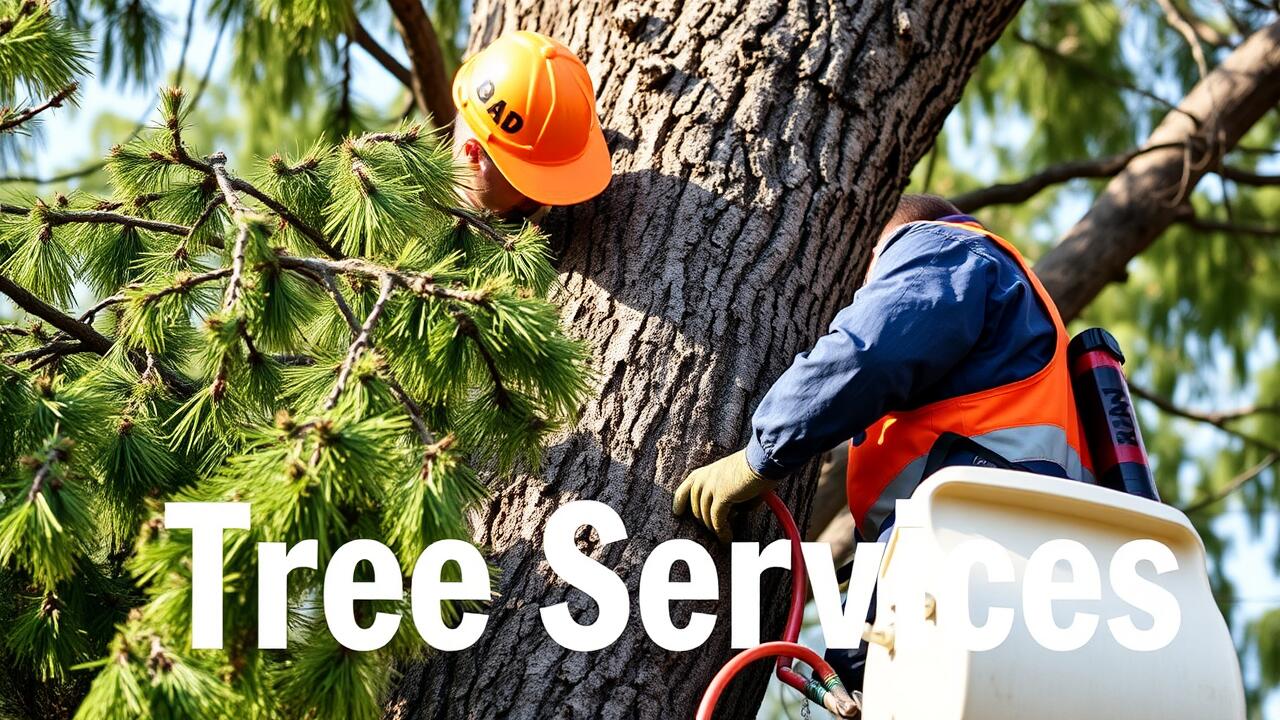
Installing Tree Cabling Systems
Tree cabling systems are designed to provide support to branches that may be at risk of breaking under stress. This technique involves the installation of cables to enhance the structural stability of the tree without causing significant harm. It can prevent damage during storms or high winds. Properly installed systems can extend the life of the tree, allowing it to thrive while reducing the chances of accidents caused by fallen limbs.
Before beginning the installation, it's crucial to assess the tree's overall health and structure. This evaluation may determine the best approach for securing the tree effectively. If the process seems daunting or if specialized knowledge is necessary, it’s wise to consider professional help. Local resources such as “Emergency Tree Services near me” can provide immediate assistance or guidance to ensure the installation is done safely and correctly.
Step-by-Step Installation Process
Installing a tree cabling system involves careful planning and execution to ensure the support structures are both effective and safe. Begin by assessing the tree's condition and determining the right branches to support. It's crucial to select materials that are durable yet flexible, such as nylon or steel cables. Once the appropriate cables are chosen, identify the installation points on the trunk and branches, ensuring that they are capable of bearing the weight and tension. Drilling pilot holes can help in securing the hardware effectively, and using tree-friendly techniques minimizes any stress on the living tissue.
After securing the hardware, attach the cables tightly but not overly so, allowing for some natural movement. Ensure that the system is balanced to avoid putting excess strain on a single area. After installation, conduct a thorough inspection to confirm everything is properly set up. Routine evaluations are important to assess the performance of the cabling system. In case of unexpected issues or severe weather, knowing reliable options for emergency tree services near me can provide additional peace of mind for homeowners.
Maintaining Cabling and Bracing Systems
Regular maintenance of cabling and bracing systems is essential to ensure the long-term health and stability of trees under support. Inspect the systems at least twice a year or after severe weather events. This involves checking the integrity of cables and braces for signs of wear, rust, or excessive movement. Adjustments may be necessary if the tree has grown significantly since installation or if structural changes have occurred.
In cases where inspections reveal issues beyond simple adjustments, it may be beneficial to consult professionals for further evaluation. Emergency tree services near me can provide immediate assistance for any urgent problems arising from cable failure or tree instability. Ensuring the support system remains effective is crucial in preventing potential hazards associated with weak or damaged trees.
Routine Inspections and Adjustments
Regular inspections of tree cabling and bracing systems are essential to ensure their effectiveness and the health of the tree. Checking for signs of wear, damage, or rust on cables and hardware helps identify potential issues before they escalate. Look for any signs of tree trunk movement or abnormal growth patterns, as these could indicate that adjustments are necessary. Performing these inspections twice a year, ideally during spring and fall, allows you to address any concerns promptly.
If adjustments are needed, they should be made with caution to avoid causing additional stress to the tree. Use proper tools and techniques to reposition cables or braces as required. Engaging professional services may be the best option for complicated situations or if the necessary skills are lacking. In cases where safety is a concern, don’t hesitate to search for "Emergency Tree Services near me" to find local experts who can assist with urgent problems or elaborate support needs.
Professional vs. DIY Tree Support
When considering tree support options, the choice between professional help and a DIY approach can significantly impact the outcome. Professionals like certified arborists bring specialized knowledge and experience to the table. They can assess the specific needs of a tree, identify risks, and implement strategies that ensure the tree's health and safety. This expertise is particularly critical when dealing with larger trees or complicated bracing systems. Their understanding of tree biology and structural integrity often results in a more effective solution than what a homeowner might achieve alone.
On the other hand, some homeowners prefer to handle tree support on their own, especially for smaller or less critical trees. While DIY methods can save on costs, they may not always result in optimal outcomes. Inadequate or improperly installed cabling can lead to further damage or safety hazards later on. When trees show signs of significant stress or damage, it is advisable to seek professional help, particularly for immediate concerns. Searching for "Emergency Tree Services near me" can connect individuals with qualified specialists who can address urgent tree-related issues effectively.
When to Hire an Arborist
When dealing with significant tree issues, hiring an arborist is often the best course of action. Professionals possess the expertise needed to evaluate the health and stability of trees accurately. They can determine whether cabling or bracing is necessary and ensure that the installation is performed correctly, reducing the risk of future complications. This level of skill is especially important for trees in high-traffic areas or near structures where the potential for damage is increased.
In cases where a tree poses an immediate threat, searching for “Emergency Tree Services near me” can connect you with professionals who can respond quickly. Arborists are trained to handle emergency situations, providing timely interventions to protect lives and property. Their knowledge of tree biology and structural integrity allows them to assess risks effectively and make informed decisions regarding tree support systems.
FAQS
What is tree cabling and bracing?
Tree cabling and bracing are techniques used to support trees with structural weaknesses or to help them withstand strong winds and storms. Cabling involves installing cables to provide support, while bracing uses rods or braces to stabilize branches or trunks.
When should I consider installing a tree cabling system?
You should consider installing a tree cabling system if your tree has a weak structure, multiple leaders, or extensive damage from storms. It’s also beneficial for trees in high-wind areas or those with heavy foliage that could cause stress to limbs.
How often should I inspect my tree cabling and bracing systems?
It is recommended to inspect your tree cabling and bracing systems at least once a year, ideally during the growing season. Additionally, inspect after any severe weather events to ensure the systems are functioning properly and haven’t caused any damage to the tree.
Can I install a tree cabling system myself?
While some homeowners may have the skills to install a tree cabling system, it’s often best to hire a professional arborist. They have the expertise to assess the tree’s needs and ensure the installation is done safely and effectively.
What are the signs that I need to hire a professional arborist for tree support?
You should hire a professional arborist if you notice significant tree damage, if the tree shows signs of stress (such as leaning or cracking), or if you’re unsure about the best method for support. Additionally, if the tree is large or located near structures, professional assistance is advisable for safety reasons.
